




















Custom-created videos accompany every Bible-in-Life lesson. Right before Step 2, a three-minute video introduces each unit theme. A guide, found with the videos, ties the unit theme to the day’s lesson.
Unit Value: Perseverance
Lesson 1 God Sees the Outcome
Sept. 7 Exodus 1:7–2:10
Lesson 2
Power for Us
Sept. 14 Exodus 3:1–4:20
Lesson 3 Trust God & Keep Trying
Sept. 21 Exodus 5:1–10:29
Sept. 28
12
19
Oct. 26
35:4–36:7
Nov. 9
11
and Obey
Nov. 16 Joshua 5:13–6:27 Lesson 12 Pause to Pray
Nov. 23 Joshua 9:1-27
13
Nov. 30 Joshua 10:1-14
Unit family devotions, along with the videos, can be sent to your families to continue learning at home.
You can stream these videos from the site or download them to your own device.
Get the lesson videos at BibleinLife.com/Video
Elementary Teacher’s Guide for grades 2-3. Can also be used for grades 3 & 4 or grades 1-3.
Editor Rebecca Stone
Designer Dale Johnson
To equip the Church with Christ-centered resources for making and teaching disciples who obediently transform today’s generations . . . David C Cook is a nonprofit organization dedicated to international Christian education.
© 2025 David C Cook, 4050 Lee Vance Drive, Colorado Springs, CO, 80918, U.S.A. Copyrighted material; permission required to reproduce. All rights reserved. Printed in South Korea.
All Scripture quotations, unless otherwise indicated, are taken from the Holy Bible, New International Version TM, NIV TM Copyright © 1973, 1978, 1984, 2011 by Biblica, Inc. Used with permission. All rights reserved worldwide. www.biblica.com.
Cover Photo: © Catherine Delahaye/Getty Images
Visit our website at DavidCCook.org Contact us at 1-800-323-7543 (U.S. only) In Canada visit parasource.com (Canada Only) or 1-800-263-2664 (Canada Only)

Unit 13
Escaping Egypt
These lessons show how God used Moses, even though he hesitated at first, to take His people out of Egypt. Just as Moses trusted God each step of the way, your students can follow his example for their lives.
Unit 14
God Delivers Us
In these lessons about Moses and the Israelites leaving Egypt, students will see how God delivered them from despair in Egypt to a new life with Him. As the Israelites celebrate, students will find that this is what God wants for them too: deliverance from darkness to light.
Unit 15
Following God with Courage
These lessons follow the Israelites’ journey to the Promised Land. As students watch Joshua and Caleb follow God as they lead, they will be challenged to trust God for wisdom, strength, and bravery for what He asks them to do.

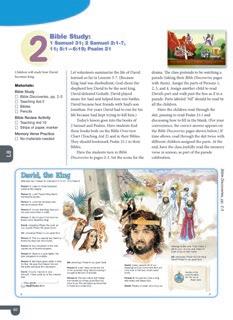
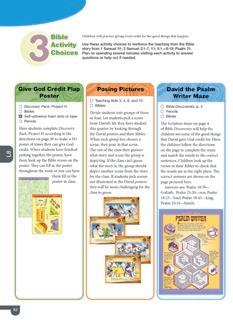
In every lesson, you’ll find a teacher devotional, Bible background information, tips on understanding and teaching second and third graders, and the Bible story along with a variety of activities to help your students learn and apply the Bible lesson. Need one per class.





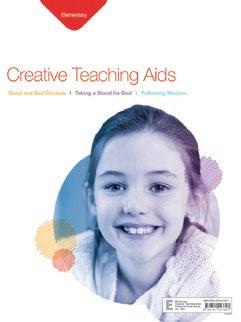
This packet equips you with all essential audio and visual resources to go with the teacher’s guide. Packets include quarterly attendance chart, posters, games, 3-D models, puzzles, and PraisePAC audio files. Need one per class.
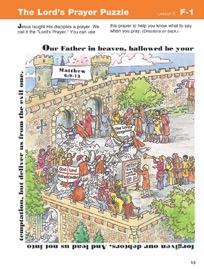
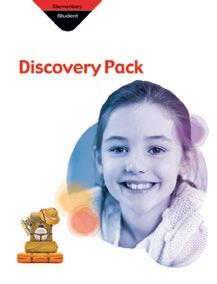


These craft books include unique and colorful crafts or games for most lessons. Need one per student.

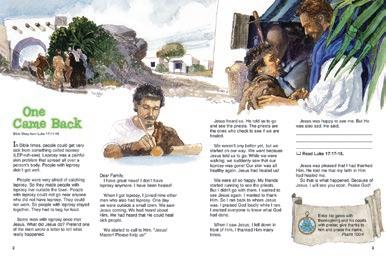
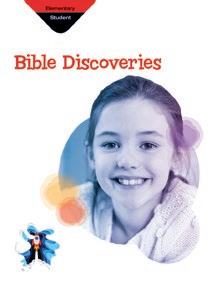
This student book, with four pages for each lesson, includes Bible study pages and activities. The cover includes the quarter’s memory verses and a poster or activity. Need one per student.

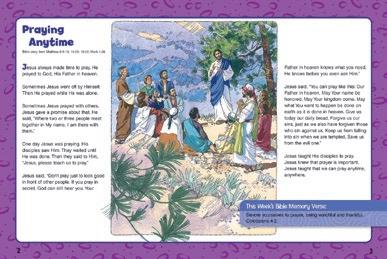

Help Bible lessons thrive in children’s hearts and hands as they take home these weekly papers. Each paper presents the Bible story, a contemporary story, activities, and suggestions for families to extend the Bible lesson at home during the week. Need one per student.
PraisePAC files feature three songs that correlate with each of the three units per quarter along with downloadable lead (song) sheets, lyric sheets, reproducible coloring pages for select elementary lessons, and postcards. Both full and accompaniment versions are available for each song.

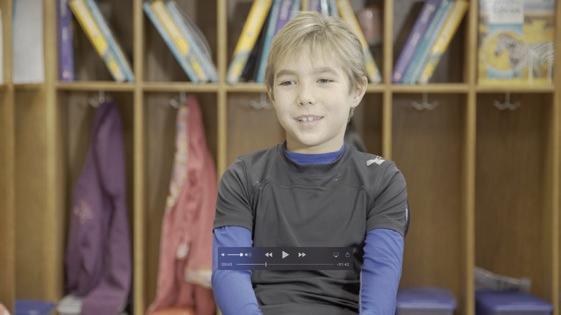

The Elementary Teacher’s Guide, Elementary Creative Teaching Aids, Bible Discoveries, and Friends are also available in a digital format. Need one bundle per class.
Each unit features a different video showing children living out their faith in everyday life. These three-to four-minute video segments highlight the monthly unit theme.
There are two downloadable guides to help bring the videos into the lives of your students:
Video Connection Guide: These tie-ins can be used at the beginning of Step 2 Bible Study. Each lesson has a tie-in that connects the theme of the video to the day’s Bible study or lesson focus.
Family Devotions Guide and the lesson videos it connects with are available for the families in your church. Email the guides to families or download them and print them out for each unit. Families can use the devotion on its own or also stream that unit’s lesson video to help their family learn and grow together. These devotions are a great way for families to build faith in everyday life!
Lesson videos, video guides, and family devotions guides can be found at BibleinLife.com/video

For the Noah’s Park Children’s Church that correlates with Bible-in-Life, visit our website at DavidCCook.org/noahspark

Find ways to spark your heart and ignite your children’s ministry. Go to MinistrySpark.com and sign up to receive more free resources.
o Elementary Teacher’s Guide (1 per class)
o Elementary Creative Teaching Aids (1 per class)
o Bible Discoveries (1 per student)
o Discovery Pack (1 per student)
o Friends (1 per student)
o Bibles
o Balloons
o Bible-time clothes
o Butcher paper or newsprint
o Construction paper, scrap paper
o Craft sticks
o Crayons and colored markers
o Game markers, spinner, and coins
o Glue or glue sticks
o Hole punch
o Index cards
o Media player
o Paper clips
o Paper fasteners
o Pencils with erasers
o Poster board
o Rhythm instruments
o Scissors
o Stapler
o Tape (clear, masking)
o Whiteboard, markers, and erasers
o Yarn, glitter, confetti
See individual lessons for additional supplies needed.

Bible-in-Life’s four-step plan is designed to be easy to teach. Each step engages teachers and learners to learn more about God and connect those findings to everyday life.
Bible Readiness helps children get ready to learn what God wants them to know about Him by connecting to their past experiences. With a short activity and discussion, this step gives your students time to share about themselves and their lives while building relationships with you and one another. These conversations will flow naturally into Step 2: Bible Study.
Bible Study uses the Bible and Bible Discoveries to help your students explore God’s Word together. Your class will dive into a portion of God’s Word, work on understanding what they’ve read, and begin to connect it to their lives. Your class will also have an opportunity to learn the memory verse for the day.
Bible Activity Choices allows children to review and explore the Bible lesson. Exploring the Bible story at their own level helps children understand and incorporate God’s Word into their dayto-day lives.
Bible Response helps children apply the story they learned to their daily lives. Students choose the best way to live out their faith in their daily experiences so they can be doers of the Word, not just hearers.
by Leura Jones
What could be more wonderful than the God who created the heavens and earth also being the one who numbers the very hairs on our heads?
“The whole earth is filled with awe at your wonders,” declares Psalm 65:8, and we get to invite kids into that sense of awe. We can do that through the Bible lessons we teach, the prayers we pray, and the words we use as we talk to kids about their lives and the God who made them.
WONDER IN SCRIPTURE
As we share Bible stories with kids, we can ask them, “What do you think that looked like? How do you think God’s people felt? What would you have been thinking if you were there?” Piquing kids’ curiosity is a great way to spark wonder in their minds.
WONDER IN PRAYER
When we pray with kids, we can communicate wonder and amazement. Psalm 145:4 shows how to commend God’s “mighty acts” to the next generation. The words we use in prayer can do that. It can be as simple as starting with, “Great and mighty God, we are amazed by You.” We may need to keep our prayers simpler as we pray with children, but that doesn’t mean our prayers can’t be big and bold and filled with wonder.
WONDER IN OUR WORDS
As we talk with kids and they tell us about their lives and share their stories, the words we use can tap into their sense of wonder:
“Wow, just think about how much God loves you! Think about all He’s done for you!”
“Can you believe God had a purpose for your life before you were even born?”
“Isn’t it amazing the way God sees you and cares about you?”
THE WONDERS THAT THEY ARE
Every child is a wonder, and every child is naturally filled with wonder. Let’s remind ourselves to see them that way. And let’s be intentional about tapping into their ready sense of awe and wonder as we help to develop and deepen their faith in God.
To connect their own experiences to the Bible story about Miriam hiding baby Moses, the children will participate in a picture-parts activity and discussion.
◽ Picture with a piece cut out
Using the Bible and Bible Discoveries, children will study Exodus 1:7—2:10: Miriam hides baby Moses.
□ Bible Study: Bible Discoveries, Lesson 1 pp. 2–3, Teaching Aids 3 and 4 (from Elementary Creative Teaching Aids), Bibles, pencils
◽ Bible Review: Teaching Aid 5 (from Elementary Creative Teaching Aids); Optional: brick or tool, baby doll, basket, crown
◽ Memory Verse Practice: Poster board, marker, scissors
Through activity choices children will explore trusting God with problems.
□ Papyrus Baskets: “God’s People in the Land of the Pharaohs,” Teaching Aid 4 (from Elementary Creative Teaching Aids), construction paper, scissors, tape
◽ K.C. and the Case of the Wet Basket: Bible Discoveries p. 1, basket, tiara, bottle of water, baby doll, triangle shape; Optional: trench coat, magnifying glass
□ Faith Project: Discovery Pack Project A, tape, markers
Children will choose to trust God with a problem they are facing.
□ Bible Discoveries p. 4 and Cover Wrap, PraisePAC audio files and PDF song sheets (from Elementary Creative Teaching Aids), media player, pencils or markers, Friends Lesson 1 and Family
Fun Activities Cover Wrap
Bible Basis: Exodus 1:7–2:10
Lesson Focus: God sees the whole picture even when we don’t.
Memory Verse: “We know that in all things God works for the good of those who love him.” Romans 8:28
Four hundred years had passed since Joseph brought his father’s family to Egypt. His family consisted of about 70 people. By Moses’ time, the Hebrew population was about two million (Num. 1:45-46).
The ruling pharaoh did not remember Joseph or what he had done for Egypt. He saw the large Hebrew population as a threat to his country, so he sought to stifle the growth of the population by enslaving the Hebrews.
But the more oppressed they were, the more the Hebrews multiplied. So the pharaoh tried a more drastic method, killing all the male Hebrew babies.
No one knows for sure precisely who the pharaohs of Exodus 1–15 were. Some scholars believe the date of the Exodus was about 1445 bc; others present evidence for a date around 1280 bc.
Pithom and Rameses, the cities mentioned in Exodus 1:11, had probably been in existence for 150 years. The custom of an Egyptian ruler was to rebuild some areas of a city, rename the city, and take credit for “building” it.
The Hebrew word used for basket in Exodus 2:3 is the same word used for the ark that Noah built in Genesis 6. Both Noah and Moses were saved in arks, though the arks were a bit different in size!
◽ This symbol will appear whenever preparation takes more than five minutes or whenever supplies are needed that are not included on the list of standard materials (on page 6).
Second and third graders are making lots of progress in their thinking skills. This development helps them make more sense of principles they’re learning in class.
• One thing they are coming to grasp is that God, as their heavenly Father, loves them and He’s in charge of everything. That fact will help them assimilate this week’s Lesson Focus.
• B e open to questions from your students. They are keen to know lots of details and facts, from the huge to the trivial. Rather than see this as a nuisance or an interruption, see it as part of their learning process. The more information you can provide, the deeper and broader their understanding of God and the Bible.
• When you don’t have answers, reassure children that even when we don’t understand, we can know that God is doing what’s right for us. It’s okay to let students know you don’t have an answer for everything, as long as they see that you fully trust God.
Are the students learning anything? Am I making a difference in their lives? Have you ever asked yourself those questions about your role as a teacher? Today’s lesson on trusting God when we can’t see the big picture can be an encouragement to you.
The impact that you as a teacher have on your students is often difficult to measure, particularly when you don’t receive any feedback. It may be years before your service as a teacher comes to fruition in your students’ lives. Yet your faithfulness has not gone unnoticed by God. He sees the whole picture, even though right now you can only see your weekly class.
What concerns do you have as you begin this new quarter?
Meditate on Philippians 1:6, “Being confident of this, that he who began a good work in you will carry it on to completion until the day of Christ Jesus.” Also think on today’s memory verse, Romans 8:28, “We know that in all things God works for the good of those who love him.”
Trust God to work in the hearts of the children you are teaching and thank Him for this opportunity to make a difference in lives even if you do not get to see the changes that will take place. Let the truths of God’s Word provide encouragement to you as you teach.
Keep early-arriving children busy until class starts with some simple activities. Consider one of these:
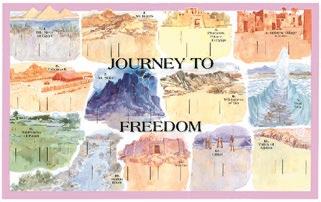

Attendance Chart—Display “Journey to Freedom,” Teaching Aids 1 and 2. Before class, write in the dates. Let children add their names to the chart and mark their attendance with a marker or a sticker in the appropriate space. Let two children insert the people pictures into the slit for Lesson 1.
Puzzle—To help your students start thinking about how to trust God, let volunteers print the words of today’s memory verse, Romans 8:28, on a poster board or large sheet of paper, then decorate the paper. Let them cut the board into puzzle pieces. The puzzle will be used later in the lesson.
To connect their own experiences to the Bible story about Miriam hiding baby Moses, the children will participate in a picture-parts activity and discussion.
Materials:
◽ Picture with a piece cut out
To help prepare the children to understand how God sees the whole picture even when we don’t, lead this activity and discussion. This will help the children begin thinking of how to deal with problems as we study about Miriam and baby Moses.
Before class, select a picture from a magazine or a downloaded file. Cut out a puzzle piece from the picture. You will need both the picture and the puzzle piece for this activity.
Gather the children into a large group on the floor. Set the puzzle piece where all the children can see it. Allow them to touch and investigate the piece, but don’t spend too much time on it. Then follow up with this discussion.
➲ What picture is this puzzle piece a part of? After all the children guess, show the picture and insert the cut out piece into it.
➲ Why did some of you guess incorrectly? (Because we couldn’t see the whole picture—only small pieces of it.)
Sometimes our lives feel like this puzzle. We can only see one small part of what’s going on. We can’t see the whole picture.
➲ When are times that you haven’t been able to see how a problem would turn out? Let the children express their experiences with being worried about something that later
made sense. Caution them not to use the names of individuals from their experiences. If some children don’t feel comfortable relating an experience, allow them to just listen and begin to realize that everyone faces difficulties, problems, and uncertainties in their lives.
➲ What’s something that you’re facing right now that worries you because you can’t see the whole picture? Let volunteers give examples. Once again, don’t pressure any child who is reluctant to participate by giving an example. They will learn a great deal just by listening. Some children might face difficulties in their families including: illness, family problems, financial difficulties, etc. This is something they can consider while not having to relate it to everyone else.
We usually don’t know what’s going to happen in our lives. But God sees the whole picture, even when we don’t. Let’s look at a problem that some Israelites faced when they couldn’t see the whole picture.
Using the Bible and Bible Discoveries, children will study Exodus 1:7–2:10: Miriam hides baby Moses.
Materials:
Bible Story
□ Teaching Aids 3, 4
□ Bible Discoveries, pp. 2–3
□ Bibles
□ Pencils
Bible Review
□ Teaching Aid 5
◽ Optional: brick or tool, baby doll, basket, crown
Memory Verse Practice
◽ Poster board, marker, scissors

Gather the children in a circle on the floor or at a table. Display “God’s People in the Land of the Pharaohs” (Teaching Aid 4). Introduce the words Egypt and pharaoh. Explain that a pharaoh was like a king, and that every pharaoh also used Pharaoh as his own name.
Point out, using the Bible Overview Chart (Teaching Aid 3) that Exodus is in the Old Testament. Talk about how Exodus tells about the Israelites who are slaves in Egypt.
Have children open their Bibles to Exodus 2:3 and bookmark it for later use. Help them use the table of contents if they need help finding Exodus. They should find the page number for Exodus and turn to that page. Then show them how to look for the chapter and verse.
Journal Entry 1, I don’t like living here in Egypt! The people of Egypt used to like us. That was because of Joseph. Hundreds of years ago, Joseph helped the pharaoh. Ever since then, my people, the Israelites, have lived here. But the man who is pharaoh now does not remember Joseph. He made us slaves. We work very hard for Egypt. We work in the fields. We work to make bricks. I wish God would help us get away from Egypt!
- Miriam
JournalEntry2, hisWe’reindanger!Pharaohtold babysoldierstodrownallofthe boysoftheIsraelites.What willhappentomybabybrother? He is three months old. Wewon’thavebeenhidinghim.Butwe be able to hide him muchlonger.Whenthesoldiersfind him,theywillkillhim. happening?Doesn’tGodknowwhatis Whydoesn’tHedo something?
- Miriam

Pass out pencils, Bibles, and Bible Discoveries for Lesson 1. Have the children turn to pages 2 and 3 in Bible Discoveries. Explain that these are possible entries from the journal of a girl named Miriam. When you come to a Bible symbol, have the whole class look up the Bible reference. Then ask for another volunteer to read it aloud. As a class, decide on the answer and have the children write down the answer in the blank. (For your convenience, the correct answers are given on the Bible Discoveries pages shown below.) Then continue reading. Let another child read the memory verse at the end.

JournalEntry3Godmighthelpussavemybabybrother! Mymothermadeabasket.Thensheputtar onit.Thatwaywatercan’tgetintoit.Wewillputmybrotherinthisbasket. We’llputit_______________________ _______________________________ .
- Miriam
Read Exodus 2:3. I’llhideandwatchtoseewhathappens. MaybesomeonefromEgyptwillfindhim andwanttotakecareofhim.Iampraying thatGodwillkeepmybrothersafe.
Journal Entry 4
Guess who found my brother— Pharaoh’s daughter! She pulled him from the water. She wants to keep him as her own. That means my brother will be safe! She even gave him a new name. Pharaoh’s daughter needed someone to take care of the baby. So I brought my mother to her. Now Moses can live with us for a while. When he gets older, he’ll live in the palace with Pharaoh’s daughter. I guess God knew what He was doing. He could see all along what would happen!
- Miriam

LESSON FOCUS: God sees the whole picture even when we don’t.

➲ Why were the Israelites unhappy? (They were slaves living in a foreign country—Egypt. Pharaoh ordered all of the baby boys to be drowned.)
➲ How do you think the Israelites felt when Pharaoh ordered his soldiers to kill the baby boys? (They probably felt that God didn’t love them anymore or that He had forgotten about them.)
➲ What was Miriam’s mother’s plan? (To put baby Moses in a basket and float him down the river, in hopes that someone kind would find him.)
➲ What part of the picture could the Israelites not see? (Miriam didn’t know how God planned to save her brother Moses; they didn’t know that God had big plans for Moses to help the Israelites.)
➲ How do you think Miriam felt when she was watching her brother in the basket in the river? (Probably scared that something might happen, hopeful that someone would rescue and keep him, trying to trust in God to take care of him, uncertain about what would actually happen, etc.)
➲ What were some things that happened to Miriam and her family that might have given them some hope? (Baby Moses was saved from Pharaoh’s soldiers; the daughter of Pharaoh found Moses
Before class print the verse in large letters on a piece of poster board. Cut the verse apart like a jigsaw puzzle.
Hand out the pieces and point out that each child doesn’t have the whole picture. Then have the students put the verse together. If you have a large class you may have to do this activity more than one time so that every child has the opportunity to help solve the puzzle.
and decided to keep him; Miriam’s mother was chosen to take care of Moses.)
➲ According to the memory verse, what is something God does that can give us hope when we can’t see the whole picture? (Knowing that God works all things together for good.)
If you have these items available (brick or tool, baby doll, basket, and crown), place them on a table in front of the children along with Teaching Aid 5. Ask for volunteers to retell the story of the Israelites, using the poster and the objects. The objects correspond to the four pictures in Bible Discoveries. The brick is for picture 1, the baby for picture 2, the basket for picture 3, and the crown for picture 4. Allow all the children to participate at one time or another in the retelling of the story. A child could tell the story about one of the objects and have another child take up the story as they reach the next object.
If you do not have the items available, you could choose children to act out the parts of Miriam, Moses’ mother, Pharaoh’s daughter, the soldiers, etc. Let the children refer to the Bible Discoveries pages as needed to help them in the retelling.
The Teaching Aid 5 poster can be placed on the wall with posters from previous quarters to create a visual time line.
“We know that in all things God works for the good of those who love him.”
Romans 8:28
□ Teaching Aid 4
□ Construction paper
□ Scissors
□ Tape
To help the students think about how God was leading in Moses’ life, let them make a basket woven with “papyrus.” After reading the information in the first block on “God’s People in the Land of the Pharaohs” (Teaching Aid 4), let the children make “papyrus” by cutting or tearing construction paper. They may also weave their papyrus into baskets.



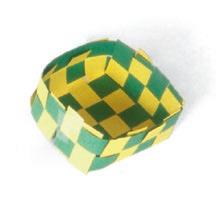
Through activity choices children will explore trusting God with problems.
In the Bible story from Exodus 1–2, the children learned how Moses’ family trusted God. Learning to trust God with problems even when we don’t see the whole picture can encourage your students in their walk and communication with God. Allow children to explore the idea of trusting God with problems by using your choice of these activities. Give directions for all the activities to the whole group. Then let the children choose which of the activities they would like to do first.
□ Bible Discoveries, p. 1
◽ Basket
◽ Tiara
◽ Bottle of water
◽ Baby doll
◽ Triangle shape
◽ Optional: trench coat, magnifying glass
Choose six volunteers to perform the drama “K.C. and the Case of the Wet Basket” on page 1 of Bible Discoveries. You might want to let the group practice the drama during this time and let them perform the drama for the entire class at the end of the time you have allotted for Step 3. Encourage the actors to get into the drama with facial expressions, arm movements, and tone of voice.

□ Discovery Pack, Project A
□ Tape
□ Markers
Give the children a chance to think about a problem they are facing and use Scripture to help them learn to trust God with it. Have the children turn to Project A in Discovery Pack and follow the directions on the back of the craft to make Big Picture Glasses. If time allows, have the students spend time in pairs sharing and praying about the problems they are facing.
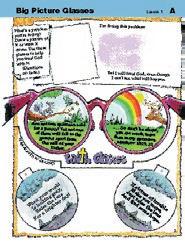
LESSON FOCUS: God sees the whole picture even when we don’t.
To apply the Bible story about Miriam trusting God to take care of baby Moses, children will choose to trust God with a problem they are facing.
Materials:
□ Bible Discoveries, p. 4
□ PraisePAC audio files and PDF song sheets
□ media player
□ Pencils or markers
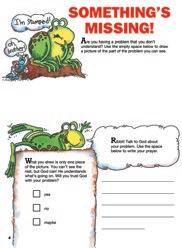

NOTE:
Hand out copies of Bible Discoveries Cover Wrap. Save a couple of copies so students can play the game “In Search of the Promise” in class throughout the quarter.
After the children have cleaned up their activities, gather them together into a large circle on the floor. Use this time for the children to choose some problem to trust God to take care of as taught in today’s Bible story about Miriam trusting God to take care of baby Moses.
God sees the whole picture, even when we don’t. He knows how our problem will turn out, even when we can only see just a piece of it.
➲ What is something you’re facing that you want to trust God with?
Pass out pencils or markers and Bible Discoveries. Have the children turn to page 4 and ask them to each draw their answer in the space indicated. If the children feel more comfortable, let them move to a place in the room where they can work privately. Keep in mind that many children are facing situations in their homes that they might not want to discuss in a class setting.
By working alone they can feel free to express their concerns. Allow the children enough time to draw their answers.
Then let the students write their own prayers to God in the space provided on the page. Be available to help children or talk to
Remind students that they can trust God with everything because He sees the whole picture even when they don’t. Encourage children to pray about their situations this week and to trust that God will work out His plan for their lives.
them as needed during this work time. After writing, the children should silently pray their written prayers to God. As the students draw and pray, play in the background the Unit 13 song on the PraisePAC audio files from the Creative Teaching Aids packet. When they have finished, ask the children to come back into the large group.
➲ Now that you have chosen something to trust God with, how can you remember that you will trust Him?
Allow the children to offer their suggestions. These may include hanging up their Bible Discoveries page in their room, praying about their situation with a parent or their entire family, praying about the problem alone at a particular time of day, etc.
Sing together “God’s Plan is Perfect,” the Unit 13 song from the PraisePAC audio files. Close by praying together for help in trusting God and His plan.
✓ Friends, Lesson 1 and Family Fun Activities Cover Wrap
✓ Bible Discoveries, Lesson 1 and Cover Wrap
✓ Discovery Pack, Big Picture Glasses
✓ Papyrus baskets from Bible Activities
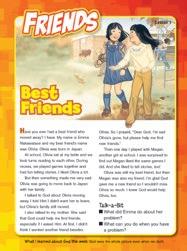


God’s Plan
Second and third graders can fall in love with Jesus and want Him as a friend for life.
» They can grasp that God is a loving, heavenly Father.
» They can feel sorry about their own wrongdoing.
» They can say with sincerity that they are sorry.
» They can understand that Jesus took their place for the punishment they deserve.
» They can understand that Jesus came back to life and so is able to do what He says.
» They can understand that there’s a commitment involved in receiving Christ.
» They can pray with faith and enthusiasm because of their wholehearted trust in God.
You can help children understand the biblical basis for these truths by reading and discussing these verses with them: Romans 5:8; Romans 3:23; Romans 6:23; John 3:16; 1 John 1:9. When possible, use a Bible translation that kids can understand and read for themselves.
Group discussions on what it means to become a part of God’s family are great. But if a child expresses a desire to accept Christ, take a few minutes in private to talk about this important decision. Encourage the child to express the desire to accept Christ in his or her own words so that your student is not just mimicking what you’ve said. And it’s helpful to allow the child to pray his or her own prayer expressing love for God, sadness over sin, and trust in Jesus. Be aware that every child grows spiritually at a different pace, so allow children to make the decision to accept Christ when they are ready. Be sure to include the child’s parents in this important decision.
In December, your students will explore God’s fulfillment of His plans, particularly His plan to save the Israelites through Gideon and His plan to save us through Jesus.
Scripture: Judges, Isaiah, Micah, Matthew, and Luke Value: Confidence
Who Jesus Is
During January, children will have the opportunity to watch and follow Jesus’ example as they examine stories where He serves others and demonstrates God’s power.
Scripture: Matthew, Luke, and John Value: Faith
What Jesus Said
February brings your students to a study of Jesus’ teachings about forgiveness, commitment, humility, and relationships. Scripture: Matthew and Luke Value: Unselfishness


The Heart Who Wanted to Be Whole Healing Our Heart

The Heart Who Wanted to Sing The Power of Songs
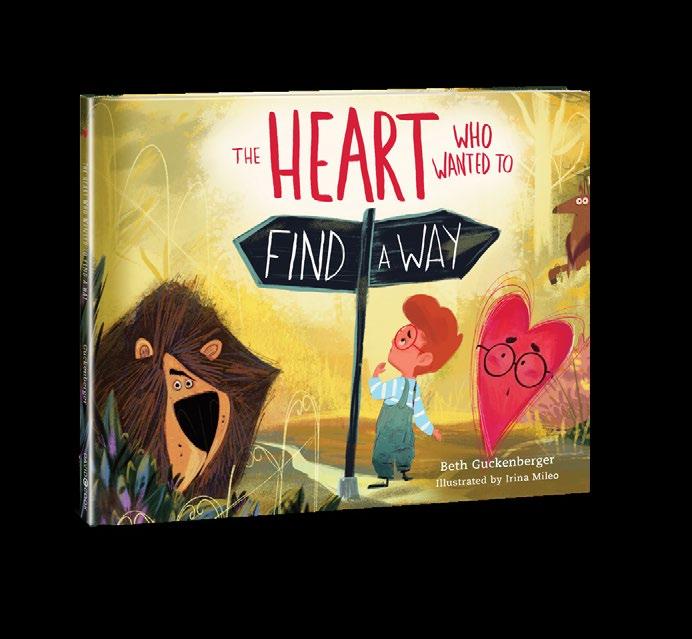
The Heart Who Wanted to Find a Way Overcome Fear
StrongHeart Stories help children see the biblical gifts—Scripture, worship, rest, prayer, confession, and community—God has given them to understand Biblical truth.
Ideal for children ages 4 to 8, the StrongHeart Stories books are high quality picture books that weave engaging stories, Bible truths, and vibrant illustrations to protect the hearts of young children and strengthen their faith in God.







escaping egypt I god delivers us I following god with courage




*While it is possible to download a .ZIP compressed file to a mobile device, you may need to install a helper App first, like UnZip or WinZip. Check the Apple App Store (iOS) or the Google Play Store (Android) for a suitable app. Search for “Zip file opener.”
ELEMENTARY CREATIVE TEACHING AIDS is published quarterly by David C Cook, DavidCCook.org. © 2025 by David C Cook, 4050 Lee Vance Drive, Colorado Springs, CO 80918, U.S.A. Bible In Life and David C Cook and its related logos are registered trademarks of David C Cook. All rights reserved. ISBN 978-0-781-44760-7 #1104125. Printed in Gunpo-si, Gyeonggi-do, South Korea, February–April 2025. All Scripture quotations, unless otherwise indicated, are taken from the Holy Bible, New International Version®, NIV® Copyright © 1973, 1978, 1984, 2011 by Biblica, Inc.® Used by permission. All rights reserved worldwide.
Digital products are subject to the End User License Agreement (EULA) found at DavidCCook.org/EULA/ and any additional terms or restrictions that may accompany the product. Digital products cannot be returned, sold, or relicensed. This product license is good for 6 months. After 6 months, you must purchase another license.
Cover Photo: © Catherine Delahaye/Getty
1 2 3 4 5 6 7 8 9 10 8 4 1 2 6 5 9 7 3 10 RED SEA
Many Egyptians were rich. Pharaoh was the richest of all. He built huge, beautiful temples to honor himself. He lived in a beautiful palace. His furniture was covered with gold and jewels. The Egyptian queens and princesses had expensive jewelry, perfumes, and makeup. On one terrible night, these things were given away to slaves. Can you tell why? (Exodus 12:35-36)

GOSHEN Home of the Israelites
People in Egypt who were rich and important were not buried until months after they had died. It took a long time to get ready for the burial. The body of the dead person was carefully stuffed and wrapped in a way that would make it last. The wrapped body was called a mummy. It was placed in a wooden or stone box

A Baby in a Basket-Boat
Miriam does her part to hide baby Moses from Pharaoh’s men. Exodus 1:7–2:10


Journey with the people of Israel out of Egypt and into the promised land. As you travel, you will finally leave Pharaoh, cross the Red Sea, discover God’s rules, and courageously enter the promised land.
Objective: The first player to enter into the promised land is the winner.
You will need: the game board 1 die 1 marker for each player
1. The youngest player goes first. The player to his/her right goes next.
2. Roll the die and move forward the number of spaces shown. Your turn is over unless you land on a colored space.
3. If you land on a yellow space: tell what happened in the picture. If you are correct, move ahead two spaces. Your turn is over.
4. If you land on a blue space: You may leave the desert and move onto the promised land by moving to the closest white space. Your turn is over. If you don’t land on a blue space you must continue on the desert loop.

P
erform the drama to review the Bible story you learned in class. You’ll need five friends, a baby doll, a basket, a tiara, a triangle shape, and a bottle of water. If you want, the detective can wear a trench coat and hold a magnifying glass as a costume.
K.C.: Hi! I’m K.C. Bible Investigator. I’m on a case. I came to the scene here and found all these clues. I’m trying to put together the whole picture to learn what Bible story this is about.
assistant #1: (Pick up the basket) K.C., I think I might be able to help you. Baskets usually hold things. This one must have held something large. It looks like it’s wet. It must have been in water.
K.C.: Water? Why would someone put a basket in water?
assistant #2 (Girl): (Pick up tiara and place on head) I love tiaras. They make me feel like a princess. (Twirl around) I wish I could be a princess.
K.C.: So far our clues tell us about a basket in water and a princess. I definitely need more clues to figure this out.
assistant #3: (Picking up the triangle shape) You know what triangles make me think of? Pyramids. Once I made a pyramid of sugar cubes for a school project about Egypt.
K.C.: A basket and a princess in Egypt, now we are getting somewhere!
assistant #4: (Pick up the bottle of water) Do you know what this reminds me of?

A river. The longest river in the world is the Nile River in Africa. It’s over 4,000 miles long and goes through nine countries including Egypt.
K.C.: Hmm… I wonder if the basket was placed in the Nile River? But what was in the basket?
assistant #5: (Pick up baby doll) I love babies. I especially love the stories of babies in the Bible—Moses, Samuel, Jesus.
K.C.: Wait, did you say Moses? I know this Bible story now. It’s about how God saved baby Moses when his mother placed him in a basket in the Nile River while his sister Miriam watched. Pharaoh’s daughter saw the basket and saved Moses. Wow! I sure needed all your help to solve that case. I’m glad that God sees the whole picture even when we don’t. I sure didn’t see the whole picture of this Bible story. (Looking at the assistants) Thanks for helping me piece this story together!
Bible Story from Exodus 1:7–2:10

Journal Entry 1, I don’t like living here in Egypt! The people of Egypt used to like us. That was because of Joseph. Hundreds of years ago, Joseph helped the pharaoh. Ever since then, my people, the Israelites, have lived here. But the man who is pharaoh now does not remember Joseph. He made us slaves. We work very hard for Egypt. We work in the fields. We work to make bricks. I wish God would help us get away from Egypt!
- Miriam
JournalEntry2, We’re indanger!Pharaohtoldbabyhissoldierstodrownallofthe boysoftheIsraelites.What willhappentomybabybrother? He is three months old. Wewon’thavebeenhidinghim.Butwe be able to hide him muchlonger.Whenthesoldiersfind him,theywillkillhim. Doesn’t God know what is happening?Whydoesn’tHedo something?
- Miriam
JournalEntry3Godmighthelpussavemybabybrother! Mymothermadeabasket.Thensheputtar onit.Thatwaywatercan’tgetintoit.Wewillputmybrotherinthisbasket. We’llputit_______________________ _______________________________ .
Read Exodus 2:3. I’llhideandwatchtoseewhathappens. MaybesomeonefromEgyptwillfindhim andwanttotakecareofhim.Iampraying thatGodwillkeepmybrothersafe.
-
Miriam

Read Exodus 2:10.
I will call him
Journal Entry 4
Guess who found my brother— Pharaoh’s daughter! She pulled him from the water. She wants to keep him as her own. That means my brother will be safe! She even gave him a new name. Pharaoh’s daughter needed someone to take care of the baby. So I brought my mother to her. Now Moses can live with us for a while. When he gets older, he’ll live in the palace with Pharaoh’s daughter.
I guess God knew what He was doing. He could see all along what would happen!
-
Miriam

“We know that in all things God works for the good of those who love him.”
Romans 8:28
A re you having a problem that you don’t understand? Use the empty space below to draw a picture of the part of the problem you can see.

R ibbit! Talk to God about your problem. Use the space below to write your prayer.
What you drew is only one piece of the picture. You can’t see the rest, but God can! He understands what’s going on. Will you trust God with your problem?
yes
no
maybe
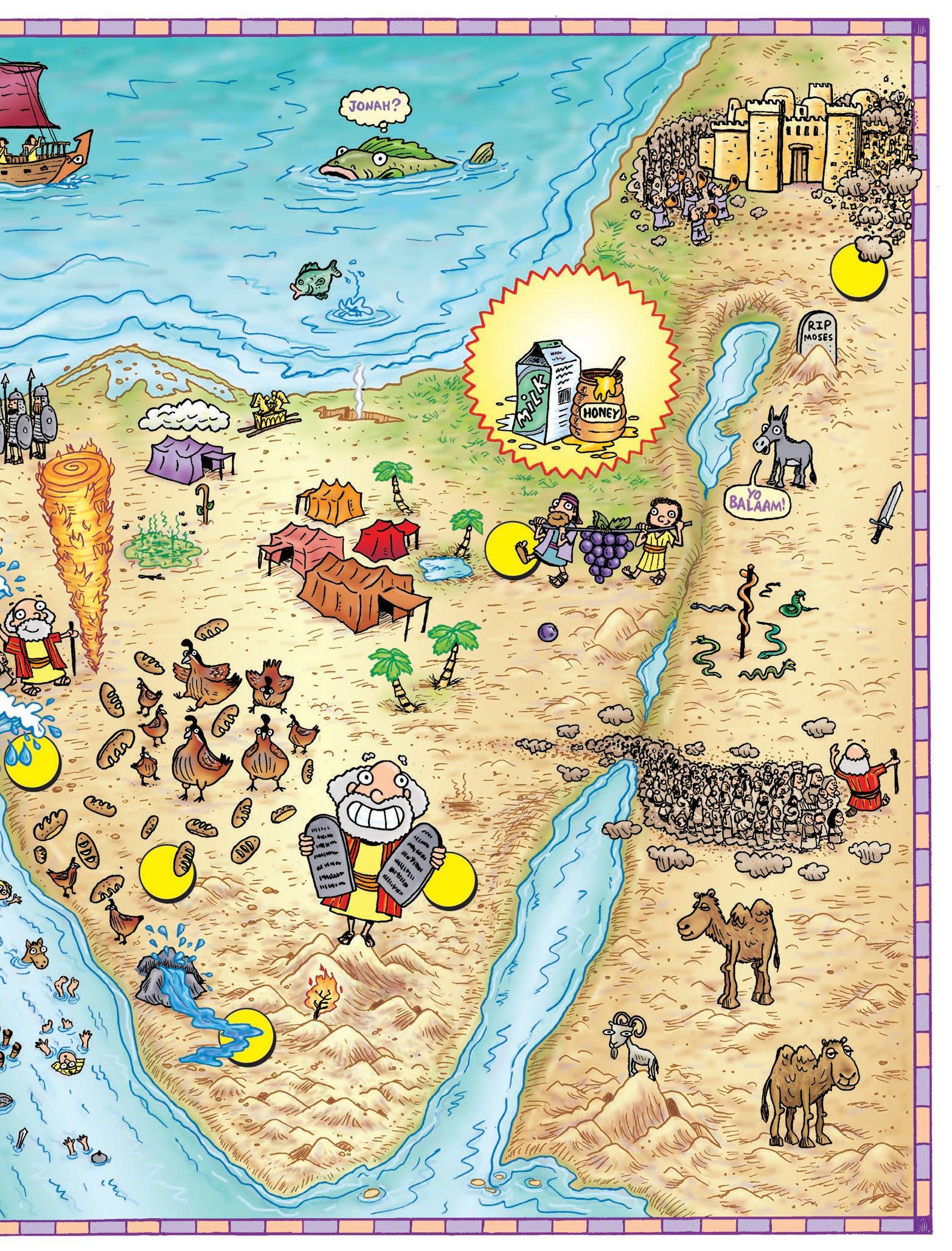


Lesson 1





“We know that in all things God works for the good of those who love him.” Romans 8:28
Lesson 2
Lesson 3


“My grace is sufficient for you, for my power is made perfect in weakness.” 2 Corinthians 12:9
Lesson 4
Lesson 5

“Let us not become weary in doing good.” Galatians 6:9
“Christ was sacrificed once to take away the sins of many.” Hebrews 9:28
Lesson 6
Lesson 7
“Sing to him, sing praise to him; tell of all his wonderful acts.” Psalm 105:2
“Do everything without grumbling or arguing.” Philippians 2:14
“Your word is a lamp for my feet, a light on my path.” Psalm 119:105



8




“Each of you should give what you have decided in your heart to give.” 2 Corinthians 9:7
Lesson 9
“Be strong and courageous. Do not be afraid; do not be discouraged, for the Lord your God will be with you wherever you go.” Joshua 1:9
Lesson 10
“You who fear him, trust in the Lord—he is their help and shield.” Psalm 115:11
Lesson 11
“If you pay attention to these laws and are careful to follow them, then the Lord your God will keep his covenant of love with you.” Deuteronomy 7:12
Lesson 12
“Be very careful, then, how you live—not as unwise but as wise.” Ephesians 5:15

Lesson 13
“My help comes from the Lord, the Maker of heaven and earth.” Psalm 121:2





What’s a problem you’re facing?
Draw a picture of it or write it down. Use these glasses to help you trust God with it.
(Directions on back.) Whenyourworld

I’m facing this problem:
But I will trust God, even though I can’t see what will happen.
Are not two sparrows sold for a penny? Yet not one of them will fall to the ground outside your Father’s care. . . . So don’t be afraid; you are worth more than many sparrows. Matthew 10:29, 31
Directions:
1. Tear off the top edge of this page. Remove the bottom of the glasses on the thick line. Remove the two lenses.
2. Open the two slits in the top of the glasses. Put tab A through slit A and tab B through slit B. Tape them down on the back.
3. Above the glasses, draw or write a problem you are facing. Open the lenses to find reasons to trust God with your problem.
Your Discovery Pack is filled with activities. They will help you find out what God’s Word says. They will help you follow God’s Word. You’ll start the projects in class and take them home to use during the week.
ELEMENTARY DISCOVERY PACK is published quarterly by David C Cook, DavidCCook.org. © 2025 by David C Cook, 4050 Lee Vance Drive, Colorado Springs, CO 80918, U.S.A. Bible In Life and David C Cook and its related logos are registered trademarks of David C Cook. All rights reserved. ISBN 978-0-781-44761-4 #1104325. Printed in Gunpo-si, Gyeonggi-do, South Korea, February–April 2025. All Scripture quotations, unless otherwise indicated, are taken from the Holy Bible, New International Version®, NIV® Copyright © 1973, 1978, 1984, 2011 by Biblica, Inc.® Used by permission. All rights reserved worldwide. Illustrators: Leslie Dunlap, Jim Engel, Gary Fields, Aline Heiser, Dennis Jones, Tony Kenyon, Marilee Harrald-Pilz, Steve McInturff, Nancy Lee Walter; Backpack by Marianne Brandenberg; Photographer: Bill Bilsley
Elementary Discovery Pack No. 1043


This month your child is learning all about Moses and the end of the Israelites’ enslavement in Egypt.
Egyptian pot
Make an Egyptian pot with clay that air-dries hard. Break off lumps of clay and roll into ropes. Coil the ropes to make a base and then build the shape of the pot. You may need to wet the clay with a little water to help the ropes stick. Use a knife to smooth the surface of the pot. When it dries, paint the pot using Egyptian colors and patterns.
This month continues the story of Moses and the Israelites on their journey to the promised land.
Smoking Mountain

When God gave Moses the Ten Commandments, the Israelites could see the smoke, fire, and lightning on Mount Sinai. Use the following experiment to create a smoking mountain.
You’ll need:
□ small jar filled halfway with water
□ vinegar
□ baking soda
□ laundry detergent
□ straw
□ tray or protective tablecloth C R A F T S





Have you ever had a best friend who moved away? I have. My name is Emma Nakawatase and my best friend’s name was Olivia. Olivia was born in Japan.
At school, Olivia sat at my table and we took turns reading to each other. During recess, we played games together and had fun telling stories. I liked Olivia a lot.
But then something made me very sad. Olivia was going to move back to Japan with her family.
I talked to God about Olivia moving away. I told Him I didn’t want her to leave, but Olivia’s family still moved.
I also talked to my mother. She said that God could help me find friends, especially if I asked Him. At first, I didn’t think I wanted another friend besides

Olivia. So I prayed, “Dear God, I’m sad Olivia’s gone, but please help me find new friends.”
Then one day I played with Megan, another girl at school. I was surprised to find out Megan liked the same games I did. And she liked to tell stories, too!
Olivia was still my best friend, but then Megan was also my friend. I’m glad God gave me a new friend so I wouldn’t miss Olivia so much. I knew God would help Olivia, too.
What did Emma do about her problem?
What can you do when you have a problem?
What I learned about God this week: God sees the whole picture even when we don’t.
Bible story from Exodus 1:7–2:10
Miriam and her family were Israelites. The Israelites were God’s people, but they were slaves in Egypt. Pharaoh, the king of Egypt, was killing their baby boys.
Miriam had a baby brother. She wanted to hide him. She watched her mother make a basket boat for her brother. Her mother put the baby in the basket. They took the basket to the river. They put it in the water.

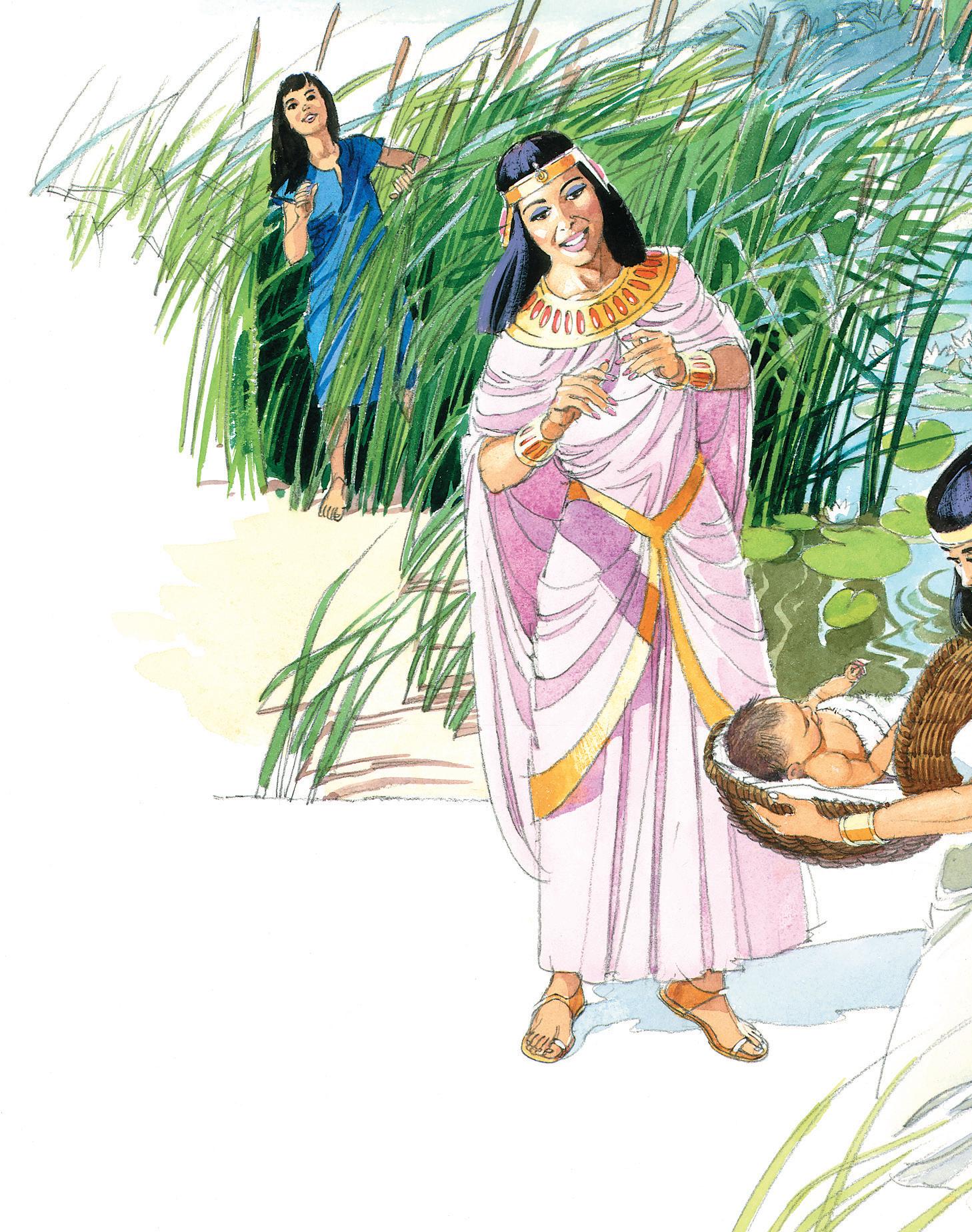
“We will hide our baby here,” said Miriam’s mother. “We don’t know what will happen, so watch and see.”
Soon Miriam saw Pharaoh’s daughter with her servants.
“What is that basket?” asked Pharaoh’s daughter. A servant went to get it. Pharaoh’s daughter looked in the basket. “It’s an Israelite baby,” she said, “and he’s so cute.”
Miriam ran over to them. “Would you like me to get someone to take care of this baby?” Miriam asked.
“Yes,” said Pharaoh’s daughter.
Miriam ran to get her mother. Pharaoh’s daughter told her to take care of the baby. Pharaoh’s daughter said, “I will name him Moses.”
God knew what would happen. God kept baby Moses safe.

This Week’s Bible Memory Verse:
“We know that in all things God works for the good of those who love him.” Romans 8:28




Miriam hid to help save baby Moses. Can you find Miriam and 10 animals in this picture? Circle them.

problems even though you can only see just pieces now.
God sees the whole picture even when we don’t.
As a family, do a jigsaw puzzle without a completed picture to look at. Then cut large jigsaw pieces from paper. On each piece write a problem that someone in the family is facing. Discuss how God sees the “whole picture” of these
Write out the verse on a large sheet of paper. Cut it apart like a jigsaw puzzle. Put it together and say the verse together.
“We know that in all things God works for the good of those who love him.”
Romans 8:28
Place the jar in the middle of the tray. If you want, make it look like a mountain by piling stones around the jar. Add 1 teaspoon baking soda and stir with a straw until it dissolves. Add the laundry detergent. Slowly pour in 1/3 cup vinegar. As you watch your “mountain” smoke, talk about the importance of rules and why the Ten Commandments are so important.
This month moves the focus from Moses to Joshua and the conquest of the promised land.
Moses and Joshua both faced challenges as they led the Israelites. Spend some time learning about and praying for the leaders in your church, city, state, and nation. Pray that they would be strong godly leaders and that they would listen to God’s direction. You may want to send notes to some of these leaders encouraging them and letting them know you are praying for them.

Prayer is simply communicating with God—listening to Him and speaking with Him. As with all relationships, it develops over time. As prayer is practiced, it becomes a habit which becomes a way of life. Here are some ways for your family to develop your prayer relationship with God.
◾ While a memorized prayer like the Lord’s Prayer is one way to pray, encourage your child to use his or her own words when talking with God. Children can be themselves when talking to their friend, Jesus.
◾ Make prayer timely. It is good to have a regular time of prayer such as mealtime and bedtime. But whenever there’s a problem, talk with Jesus about it right away. Thank God for the good things that happen and ask for His help to deal with the not-so-good.
◾ Keep a family prayer journal. It doesn’t have to be fancy or elaborate. Just write down your prayer requests, then, go back to them later to write how God answered.
◾ Let your child hear you pray and listen to you talk about prayer requests with others. Let your child know that you spend time praying specifically for him or her.

Scripture Passage: Exodus 1:7–2:10
Memory Verse: “We know that in all things God works for the good of those who love him.” Romans 8:28

Scripture Passage: Exodus 3:1–4:20

Lesson 7
“Your word is a lamp for my feet,
Lesson 8
Scripture Passage: Exodus 25:1-9; 35:4–36:7
Memory Verse: “Each of you should give what you have decided in your heart to give.” 2 Corinthians 9:7
Lesson 2 Lesson 9
Memory Verse: “My grace is sufficient for you, for my power is made perfect in weakness.” 2 Corinthians 12:9
Scripture Passage: Exodus 5:1–10:29
Memory Verse: “Let us not become weary in doing good.” Galatians 6:9
Scripture Passage: Exodus 11:1–12:42
Memory Verse: “Christ was sacrificed once to take away the sins of many.” Hebrews 9:28
Scripture Passage: Exodus 13:17–15:21
Memory Verse: “Sing to him, sing praise to him; tell of all his wonderful acts.” Psalm 105:2
Lesson 6
Scripture Passage: Exodus 15:22–16:24; Numbers 11:4-9
Memory Verse: “Do everything without grumbling or arguing.” Philippians 2:14
Scripture Passage: Numbers 13:1–14:45
Memory Verse: “Be strong and courageous. Do not be afraid; do not be discouraged, for the Lord your God will be with you wherever you go.” Joshua 1:9
Lesson 10
Scripture Passage: Joshua 2:1–3:17
Memory Verse: “You who fear him, trust in the Lord—he is their help and shield.” Psalm 115:11
Lesson 11
Scripture Passage: Joshua 5:13–6:27
Memory Verse: “If you pay attention to these laws and are careful to follow them, then the Lord your God will keep his covenant of love with you.” Deuteronomy 7:12
Scripture Passage: Joshua 9:1-27
Memory Verse: “Be very careful, then, how you live—not as unwise but as wise.” Ephesians 5:15
Lesson 13
Scripture Passage: Joshua 10:1-14
ELEMENTARY FRIENDS is published quarterly by David C Cook, DavidCCook.org. © 2025 by David C Cook, 4050 Lee Vance Drive, Colorado Springs, CO 80918, U.S.A. Bible In Life and David C Cook and its related logos are registered trademarks of David C Cook. All rights reserved. ISBN 978-0-781-44598-6 #1104425. Printed in Gunpo-si, Gyeonggi-do, South Korea, February–April 2025. All Scripture quotations, unless otherwise indicated, are taken from the Holy Bible, New International Version®, NIV® Copyright © 1973, 1978, 1984, 2011 by Biblica, Inc.® Used by permission. All rights reserved worldwide. Illustrators: Elizabeth Allen, David Barnett, C. C. Beck, Craig Boldman, Bruce Day, Shelley Dietrichs, Leslie Dunlap, Joy Dunn, George Erling, Van Evan Fuller, Chuck Hamrick, Marilee Harrald-Pilz, Conrad Hasck, Joyce John, Steve McInturff, Jay Mead, Paul Montgomery, Donna Kae Nelson, Jim Philips, Naomi Pridjian, Cruz Puga, B.B. Sams, Terry Sirrell, Paul Thompson, Paul Turnbaugh, Jenny Williams; Photos: Publisher-owned by Brad Armstrong or Gené Photography Cover photo: © Catherine Delahaye/Getty Images Elementary Friends No. 1044
Memory Verse: “My help comes from the Lord, the Maker of heaven and earth.” Psalm 121:2